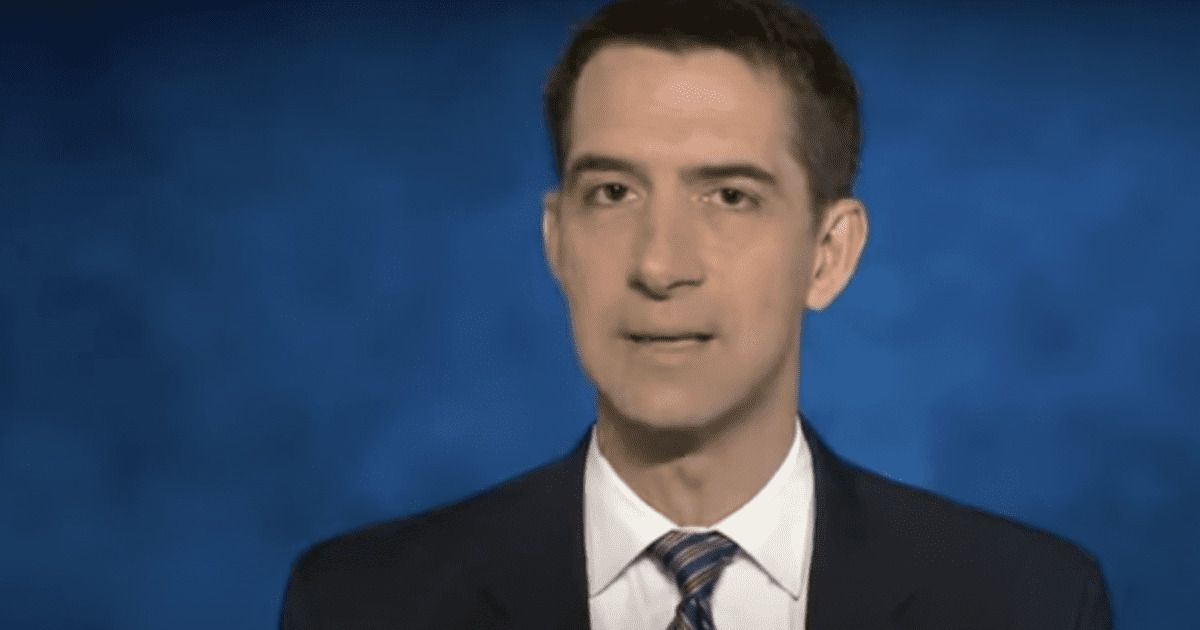The walls are closing in on Fauci.
Gain of function research may have just been the cause of the covid-19 virus, and a lot more media coverage and reports have been alleging that this may just be the case.
This time Senator Tom Cotton has come out to once again throw his support behind that theory.
My opinion is that Senator Cotton knows exactly what he is talking about, and it looks like Fauci and all these other ‘experts’ are just trying to cover their tracks.
Gain of function research was banned under Obama, and for good reason.
Why are scientists trying to create a super virus in order to combat future spread of said virus? It just doesn’t make any sense, and was a poor move on their part.
Check it out:
The Wall Street Journal wrote:
Sens. Ron Johnson of Wisconsin and Dr. Rand Paul of Kentucky lead the signers of the new letter to Dr. Francis Collins, director of the National Institutes of Health. The letter contains various footnotes and relies on both government and media reports to assert the following history:
Since the beginning of the pandemic, the exact origin of SARS-CoV-2 has remained elusive. Recently, in response to the World Health Organization’s study of SARS-CoV-2’s origins, a group of eighteen scientists published a letter in Science Magazine stating that a leak of the virus from a lab is a “viable” theory and should be thoroughly investigated. Yet, obtaining information about the research on bat coronaviruses conducted at China’s Wuhan Institute of Virology has been very difficult. Such information, including if and when gain of function experiments occurred at the lab, is crucial in determining the viability of the laboratory introduction theory. In light of the many unanswered questions regarding the origins of the SARS-CoV-2, we write to seek information regarding the National Institutes of Health’s (NIH) 2014 funding pause on gain of function research (also referred to as the moratorium), exceptions NIH may have granted from that pause to allow gain of function research to continue, and the lifting of that pause in 2017.In October 2014, following several high profile biosafety incidents at labs, as well as public scrutiny of gain of function research studies, the Department of Health and Human Services and NIH instituted a pause on funding research of gain of function experiments “involving influenza, SARS, and MERS viruses.” The U.S. government (USG) noted, though, that “[a]n exception from the research pause may be obtained if the head of the USG funding agency determines that the research is urgently necessary to protect the public health or national security.” This pause did not apply to currently-funded research at the time, but the moratorium did urge “the USG and non-USG funded research community to join in adopting a voluntary pause.”
One of the notable NIH-funded studies that was already underway prior to the funding moratorium was Dr. Ralph Baric’s work on a “lab-made coronavirus related to SARS.” In this 2015 study, researchers reportedly created a chimeric virus “related to SARS [that] can infect human cells.” Dr. Zhengli-Li Shi, “China’s leading expert on bat viruses” from the Wuhan Institute of Virology, contributed to this research. An article noted that NIH allowed this study “to proceed while it was under review by the agency.” Baric reportedly added that “NIH eventually concluded that the work was not so risky as to fall under the [gain of function] moratorium.” It is unclear why NIH apparently concluded that this study was not “risky” enough to fall under the moratorium.In addition to Baric’s apparent gain of function research in 2015, NIH and the National Institute of Allergy and Infectious Diseases (NIAID) also reportedly funded similar coronavirus research conducted by EcoHealth Alliance, which subcontracted with Shi. Because of Shi’s research and her connection to the Wuhan lab, Dr. Richard Ebright, a molecular biologist and infectious disease expert, stated, “[i]t is clear that the Wuhan Institute of Virology was systematically constructing novel chimeric coronaviruses and was assessing their ability to infect human cells and human-ACE2-expressing mice.” In fact, Dr. Peter Dasazk, the president of EcoHealth Alliance, spoke about changing coronaviruses in a lab. In an interview Dasazk stated, “Well I think . . . coronaviruses — you can manipulate them in the lab pretty easily.”
In December 2017, NIH lifted the funding pause and established a multi-disciplinary review process, known as the P3CO Framework, to ensure that federally funded gain of function experiments are “conducted responsibly.” It is unclear whether EcoHealth Alliance or any of its subcontractors was granted an exception to the moratorium or whether NIH reviewed those studies in connection with the P3CO Framework.The lawmakers then ask a series of questions intended to find out exactly what Americans funded and what exactly happened at the Wuhan Institute of Virology, which has denied being the source of the pandemic, as has Dr. Shi.
The letter also seeks to clarify whether the NIH, in denying responsibility to this point, has adopted a more narrow definition of gain-of-function research than non-government scientists.
The National Pulse had more:
“Are you still confident that it developed naturally,” Sanders questioned the National Institute of Allergy and Infectious Diseases (NIAID) Director.
“No, actually,” Fauci responded. He continued, adding he was “not convinced” that the virus has natural origins:
“No. I’m not convinced about that. I think that we should continue to investigate what went on in China until we find out to the best of our ability exactly what happened. Certainly, the people who investigated it say it likely was the emergence from an animal reservoir that then infected individuals, but it could have been something else, and we need to find that out. So, you know, that’s the reason why I said I’m perfectly in favor of any investigation that looks into the origin of the virus.”



Join the conversation!
Please share your thoughts about this article below. We value your opinions, and would love to see you add to the discussion!